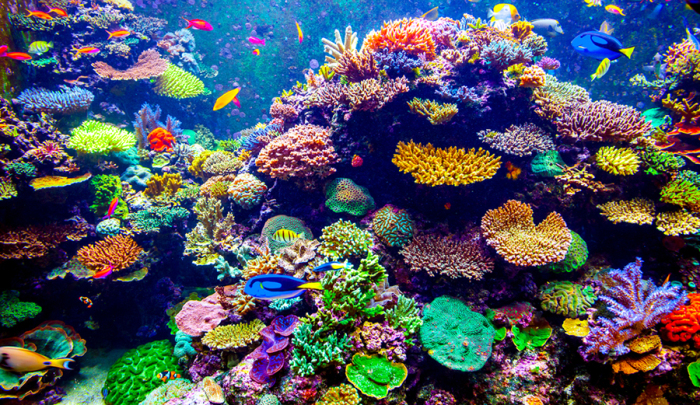Coral IVF is showing promising results at the Great barrier

IVF is a term we all have heard about but coral IVF is not a term we usually hear about. As we all know that IVF (In vitro fertilization) is a technique used for the conception of a child. It involves several complex methods. Coral IVF is a similar procedure, it also involves the conception of a child but the only difference is that it involves the conception of coral reefs, not a human child.
Coral IVF is done by a team from Southern Cross University’s Marine Ecology Research Center to protect the coral reefs of the Great barrier which are bleaching at a heavy rate.
Peter Harrison, director of Southern Cross University’s Marine Ecology Research Center, and his team aimed for an ‘IVF treatment’ in 2016 to save the losing population of coral reefs and it is now showing promising results.
Harrison and his team started their project on Heron Island in 2016 in association with the Great Barrier Reef Foundation. The IVF treatment of coral reefs began with the larvae restoration technique. In this technique, coral sperm and eggs were gathered. The larvae were cultures in special mediums in an enclosure for about a week. The cultured larvae were then scattered to the damaged part of the coral reefs. The damage was done by bleaching.
When Harrison and his team visited the site where larvae were scattered they saw positive results. The corals varied in diameter and were healthy despite the bleaching events in Heron Island in March.
Peter Harrison said that he’s “really excited” about the trial’s progress which shows more than 60 corals on their way to enter the reproduction phase again.“This proves that the larvae restoration technique works just as we predicted and we can grow very large corals from tiny microscopic larvae within just a few years” Harrison said.
Corals live in a mutual relationship with algae, algae behaves like a symbiont and it is crucial for the health of a coral reef. Algae is a potential source of energy for coral reefs, 90% of the energy for corals comes from algae. When bleaching occurs algae polyps expel the symbiont algae which leads to its starvation and then death. Some algae recover from the bleaching but most of them cannot survive it.
Bleaching can have many reasons behind it but the most common reason is an increase in temperature. The longest recorded global bleaching events occurred in 2014 and 2016 which causes mass death of the corals and kill about 29 and 50 percent of the reef’s coral in the world’s biggest coral reef system, The Great Barrier Reef.
Coral can sustain short term damage but long term exposure kills them. There are several triggers apart from the hot water that can lead to the death of corals including oxygen starvation due to an increase in the number of zooplanktons due to excessive fishing or increased solar irradiance, sedimentation, or bacterial infection or disturbance in salinity, etc.
In 2017 National Geographic, a television network and flagship channel noted, “In the past three years, 25 reefs—which comprise three-fourths of the world’s reef systems—experienced severe bleaching events in what scientists concluded was the worst-ever sequence of bleachings to date.”
Corals are important for maintaining the balance of underwater and also for stable economic conditions of humans. Countless sea life is dependent on the coral reefs for shelter and protection from predators. If they get finished human life will be badly affected. Experts say that it could lead to hunger, poverty, and political instability as a large part of our society depends on those fish and other marine creatures for food and livelihood.”
Apart from the economic loss humanity will face, it is our moral duty to protect the home of those marine creatures. We are also a species and we need to understand that we share this planet with others, we don’t own it.
